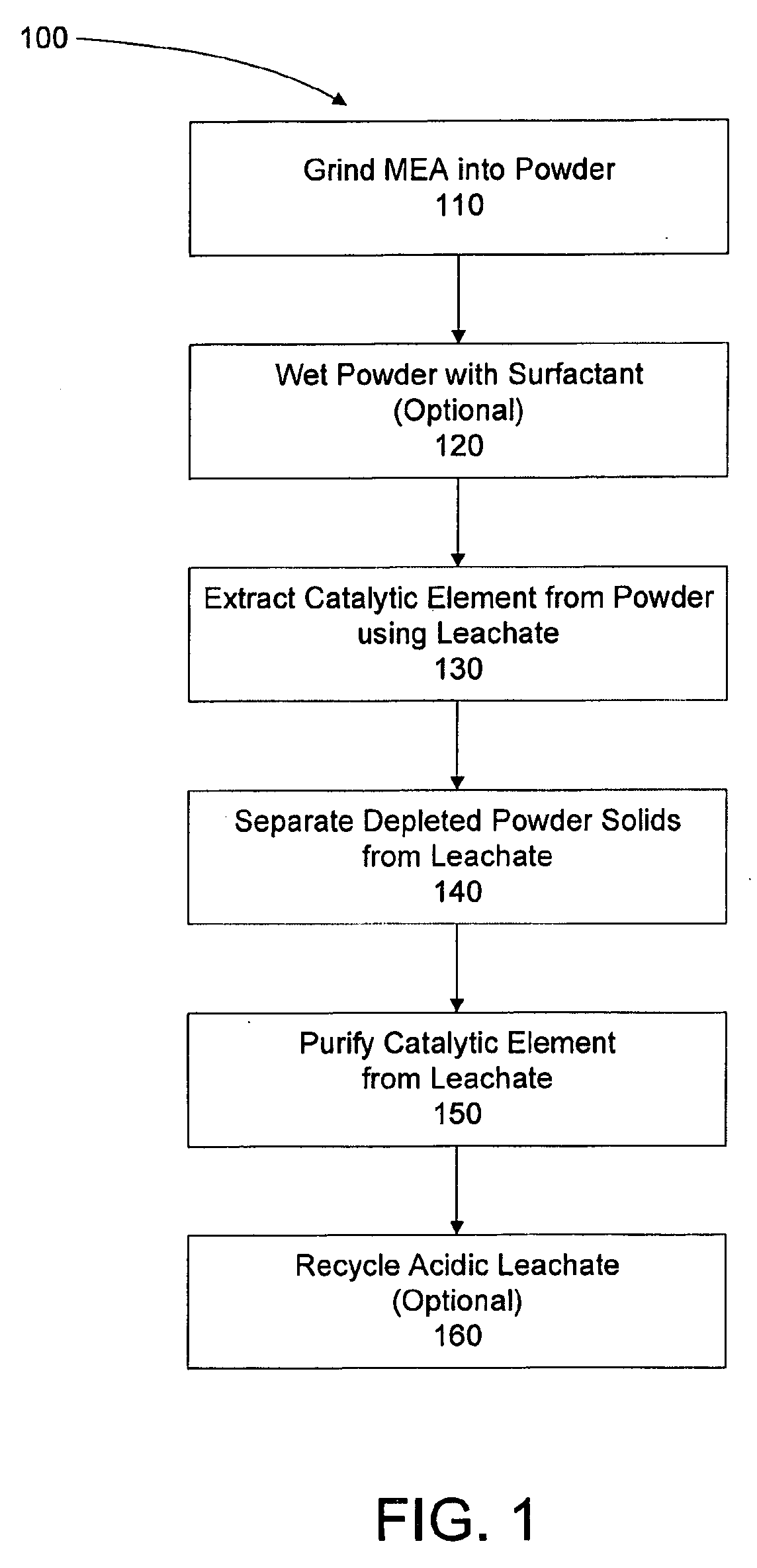Efficient process for previous metal recovery from fuel cell membrane electrode assemblies
a fuel cell membrane electrode and electrode assembly technology, applied in the direction of electrochemical generators, solvent extraction, separation processes, etc., can solve the problems of fuel cell often having to be replaced, high cost and limited supply of platinum and other catalytic elements, and the reduction of catalytic element particles, so as to achieve the effect of less effective, and less efficien
- Summary
- Abstract
- Description
- Claims
- Application Information
AI Technical Summary
Benefits of technology
Problems solved by technology
Method used
Image
Examples
Embodiment Construction
[0020]As used herein the term “catalytic element” is understood to include platinum or other precious metal catalytic material such as ruthenium, palladium, gold, and rhodium. Although the term “platinum” is often used interchangeably with the term “catalytic element,” and platinum is frequently discussed as an exemplary catalytic element, it is understood that the methods described herein are equally applicable to other precious metal catalytic elements, including but not limited to ruthenium, palladium, gold, and rhodium.
[0021]Referring to the drawings, where like numerals identify like elements, there is shown in FIG. 1 a flow chart representation of a method for recovering a high percentage of precious metal catalyst from fuel cell membrane electrode assemblies. Recovery rates of platinum catalyst in excess of 98% have been achieved using an embodiment of the method, as described herein. The method eliminates hazardous emissions inherent in the alternative combustion method, and...
PUM
| Property | Measurement | Unit |
|---|---|---|
| mass | aaaaa | aaaaa |
| mass | aaaaa | aaaaa |
| mass | aaaaa | aaaaa |
Abstract
Description
Claims
Application Information
 Login to View More
Login to View More - R&D
- Intellectual Property
- Life Sciences
- Materials
- Tech Scout
- Unparalleled Data Quality
- Higher Quality Content
- 60% Fewer Hallucinations
Browse by: Latest US Patents, China's latest patents, Technical Efficacy Thesaurus, Application Domain, Technology Topic, Popular Technical Reports.
© 2025 PatSnap. All rights reserved.Legal|Privacy policy|Modern Slavery Act Transparency Statement|Sitemap|About US| Contact US: help@patsnap.com



